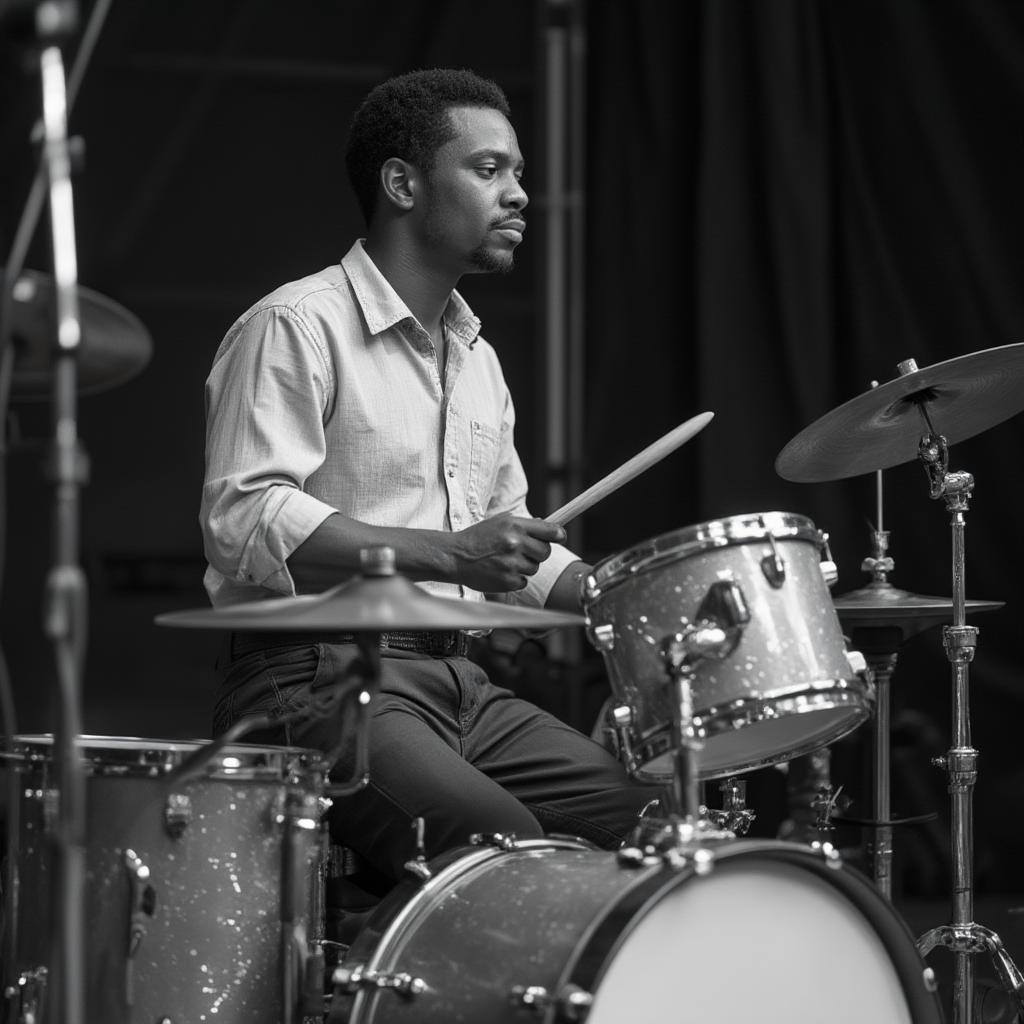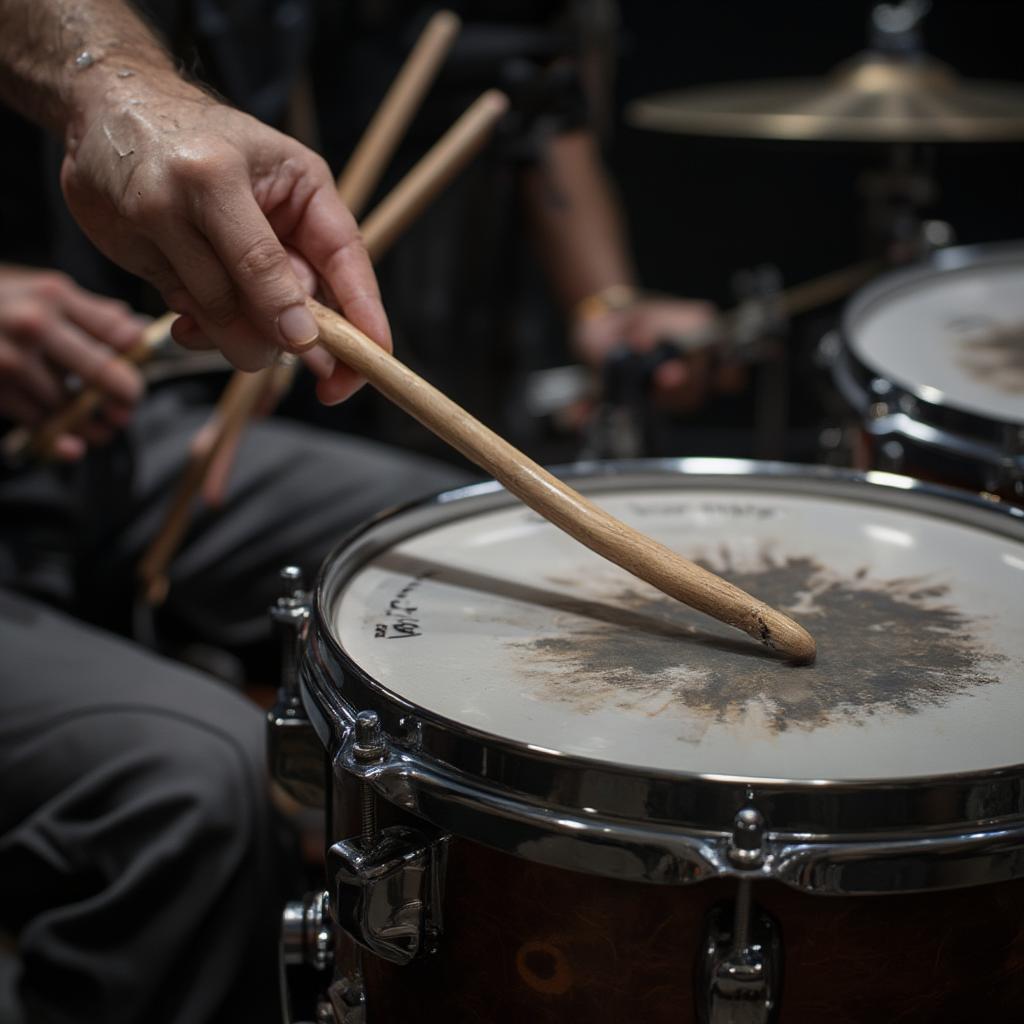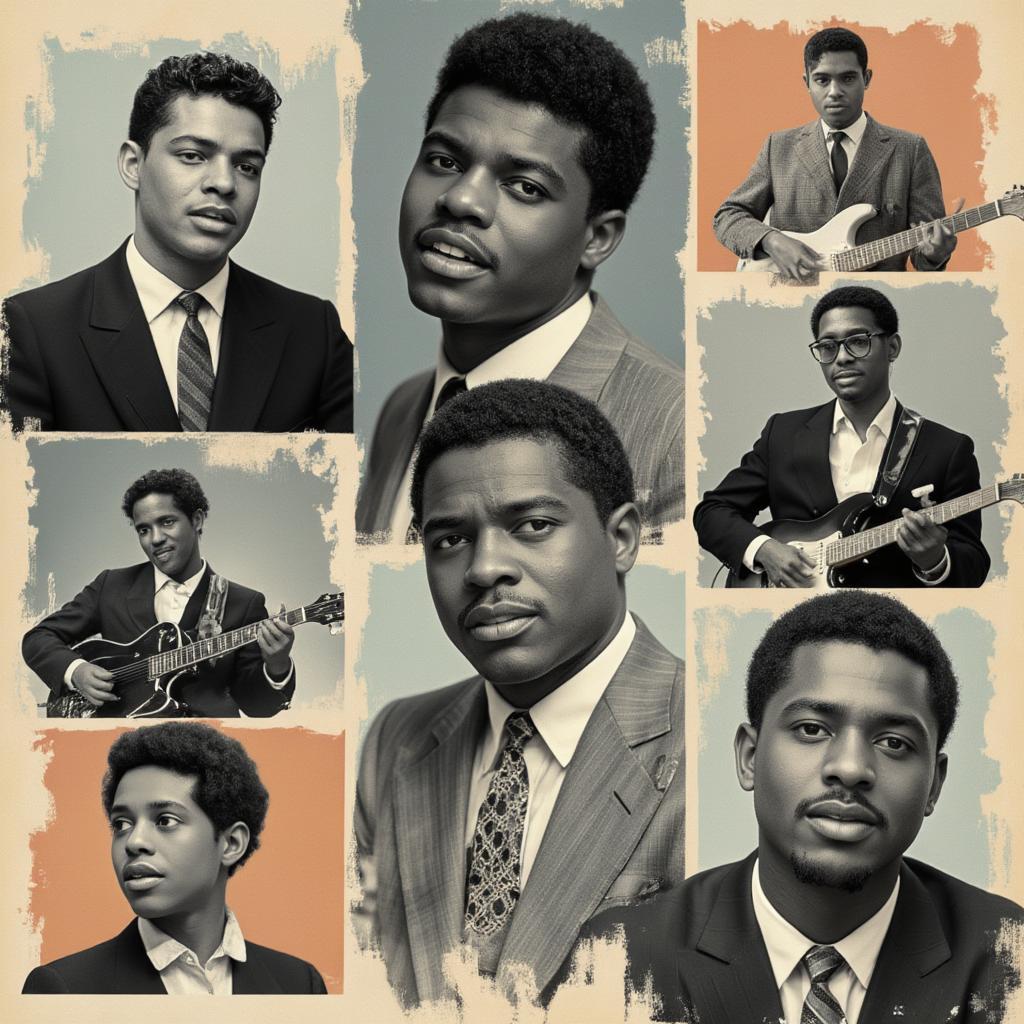The Commandments of Early Rhythm and Blues Drumming: A Midnight Howler’s Guide

The backbeat, the heartbeat of rhythm and blues, wouldn’t exist without the drummers. They’re the unsung heroes, the groove architects, and the timekeepers who laid the foundation for everything that came after. Understanding The Commandments Of Early Rhythm And Blues Drumming isn’t just about technical proficiency; it’s about feeling the soul of the music. So, let’s delve into the fundamental principles that shaped this iconic sound.
The Foundation: Keeping Time with Feeling
Before we get into the nitty-gritty, let’s acknowledge the central principle: time. These drummers weren’t just hitting things; they were creating a pulse, a groove, a feeling. The timekeeping wasn’t robotic; it had a human quality, a push and pull that made you want to move. It’s about feel, it’s about anticipation. You weren’t just marking time, you were driving the bus. The feel of each hit was as important as where it landed.
The Importance of a Steady Backbeat
The backbeat, typically on beats two and four of a 4/4 measure, is the bedrock of R&B. It’s where the snap of the snare lands, providing that characteristic rhythmic emphasis. Early R&B drummers approached the backbeat with a particular weight and authority. They weren’t just tapping the drum; they were owning it. This emphasis on the backbeat became a defining element of the genre, distinguishing it from swing and other styles of the era. Think of it as the rhythmic backbone that everything else hangs on to.
The Minimalist Approach: Less is More
Early R&B drumming often emphasized simplicity. It wasn’t about flashy fills or complex polyrhythms. It was about locking in with the bass and creating a solid, uncluttered foundation for the other musicians. These drummers understood the power of space and let the music breathe. You often hear phrases like, ’Give the song some air’ thrown around among players of this era.
The Power of the Groove: Swinging, Not Just Keeping Time
While the backbeat was crucial, it wasn’t just about hitting the snare on two and four. Early R&B drummers focused on swinging the time. This means slightly pushing or pulling the beat in a way that gives the music a unique rhythmic feel. It’s not just about being on the beat; it’s about being around it, creating a sense of flow and momentum. It’s that ‘pocket’ everyone is looking for.

The Instruments: A Limited Pallette
The drum sets of this era were often quite basic, compared to the sprawling kits of modern drummers. This limitation forced these early artists to be creative within a very small canvas. Let’s see how they did that.
The Snare Drum: The Heart of the Backbeat
The snare drum was the centerpiece of the early R&B drummer’s arsenal. It was usually tuned fairly high, with a crisp, cracking sound that cut through the mix. The snare was often played with a distinct rimshot, adding to that punchy backbeat. It was used to create the defining rhythmic pulse of the era. This wasn’t just any snare hit; it was a statement.
Bass Drum: The Foundation of the Groove
The bass drum was primarily used to reinforce the pulse, usually played on all four beats or on beats one and three. It wasn’t about overpowering the other instruments, but providing a solid, grounding force. It provided that deep, underlying current that anchors the music. Subtle variations in bass drum strokes would create a sense of driving motion and anticipation.
Hi-Hats: The Subtle Syncopation
Hi-hats were often played in a simple 8th-note or quarter-note pattern. However, the emphasis was on the sound and the swing of the pattern. The hi-hats added a subtle layer of syncopation and a delicate sizzle to the rhythm. Many early R&B drummers would open and close them to add subtle accents or fills, making it more than just a mere timekeeper.
Cymbals: Carefully Placed Accents
Cymbals were used sparingly, usually to accent a particularly powerful moment or create a swell in intensity. They were used to create texture and drama. In some tracks, only one cymbal would be used to maintain the simplicity and purity of the sound. This minimalist approach allowed their sonic impact to be much greater.
From The Greats of the Era
“The key to early R&B drumming wasn’t about complexity, it was about making the simplest beats groove like crazy,” explains Professor Marcus “The Beat” Baylor, a renowned music historian and professor at the New Orleans School of Music. “These guys weren’t just playing drums, they were playing feeling.”

The Technique: Beyond the Basics
Now that we’ve examined the instruments and fundamental principles, let’s look at the techniques that defined this era.
The Grip and Stroke: Power and Precision
Early R&B drummers often used a matched grip, holding both sticks the same way. This allowed for a more natural and fluid motion, particularly when playing the backbeat. A lot of emphasis was placed on the wrist rather than the entire arm for greater control and accuracy.
The Dynamics: Shades of Rhythm
Dynamics – the range between loud and soft – were crucial in this music. They weren’t just blasting away at full volume; they were using dynamics to create contrast and texture. This was essential to maintain the depth and emotion of the songs. The ability to play quietly and powerfully with intentionality set the masters apart.
The Feel: Playing With Soul
Beyond technique, the most important element was the feel. This is something that’s hard to teach, something that comes from within. It’s that intangible element that makes the music come alive. It’s the soulfulness that defines a great rhythm and blues drummer. That soul is what the listener connects with.
Listening Deeply: The Key to Success
Early R&B drummers were great listeners. They locked in with the other musicians and created a unified sound. They understood that drumming wasn’t just about what they were playing, but how it fit into the overall musical picture. It was a conversation between instruments that created the full story.
Stepping Into History
“Understanding the history is the first step in mastering it” says Dr. Evelyn “Rhythm” Richardson, a noted researcher specializing in the evolution of American music. “Early R&B drummers understood that they were not only building on the past, but they were also building for the future.”
Mastering the Art: Putting it All Together
Mastering early R&B drumming isn’t about simply imitating the greats; it’s about understanding the principles and finding your own voice within them. This involves some dedicated practice and a listening ear.
Practice the Backbeat: Relentlessly
The backbeat is the foundation. Start with a simple groove and focus on achieving a consistent and powerful backbeat. Practice with a metronome, but also try practicing without it to develop your internal time. You’ll want to aim to make the backbeat your second nature.
Focus on the Groove: Feel the Pulse
Don’t just play the notes; feel the groove. Listen to a lot of early R&B music and pay attention to how the drums interact with the other instruments. Try to feel how they are pushing or pulling the time. You have to live and breathe the feeling to truly nail it.
Learn from the Masters: Transcribe and Analyze
Listen to the great early R&B drummers: Earl Palmer, Al Jackson Jr., Charles Connor, and countless others. Try transcribing their beats and analyzing what makes them unique. Pay attention to their dynamics, their feel, and their use of space. This approach will inform your own style.
Develop Your Own Voice: Add Your Personality
While it’s important to understand the principles, don’t be afraid to develop your own voice. Experiment with different sounds, rhythms, and techniques to find what feels right for you. It’s important to infuse your personality and personal style into the sound.
The Rhythm and Blues Legacy
“These drummers were not just playing the beat, they were telling the story,” concludes Professor Baylor. “They laid down the rhythm and the feeling that still moves us today. That’s the legacy of rhythm and blues.”
The Final Beat: The Soul of R&B
The commandments of early rhythm and blues drumming are not simply rules to be followed; they are principles to be internalized. It’s about feel, groove, simplicity, and most importantly, playing with soul. It’s about understanding the past and carrying that legacy forward, always remembering that the backbeat is the heart of rhythm and blues. Embrace the groove, swing with the spirit, and let your drums tell the story.
FAQ
1. What is the key element of early rhythm and blues drumming?
The key element is a strong and steady backbeat, usually on beats two and four, delivered with a particular weight and authority that creates the genre’s characteristic groove.
2. What instruments were typically used in early rhythm and blues drumming?
The basic kit included a snare drum, bass drum, hi-hat cymbals, and a few other cymbals. These were used in a minimalist fashion to create the powerful R&B sound.
3. What does “swing” mean in the context of early rhythm and blues drumming?
“Swing” refers to the slight push and pull of the beat, creating a unique rhythmic feel that is not just strictly on the beat, but around it, giving the music momentum.
4. How did early R&B drummers approach the snare drum?
The snare drum was tuned high, and they used rimshots for emphasis and a crisp, cracking sound that was very punchy and cut through the mix effectively.
5. Why is simplicity so important in early R&B drumming?
Simplicity was important because it allowed the music to breathe and it created a solid foundation that allowed the other instruments to shine. It’s all about locking in with the bass.
6. Who are some of the key drummers from the early rhythm and blues era?
Some key drummers include Earl Palmer, Al Jackson Jr., and Charles Connor, whose styles exemplify the groove and feel of the era.
7. How can I improve my rhythm and blues drumming?
Improve your drumming by practicing a solid backbeat, listening deeply to the greats, and focusing on the groove, while also experimenting to find your own voice within the style.




